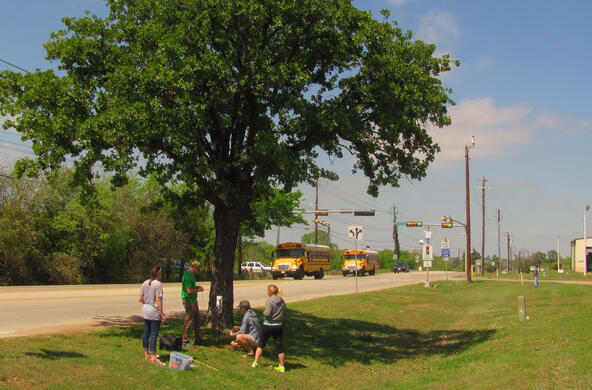Think of how valuable it would be to forecast disasters—earthquakes, heart attacks, and stock market collapse. We seem to fail in good predictions of each of these, although it is certain that over the long-term some of us will experience them.
Ecological field studies may have something to offer to disaster forecasts, which are often known euphemistically as “phase-transitions” or “regime shifts.” In several field experiments, ecologists have noted that before the collapse of an ecological system—let’s say the demise of fish in a lake—there is often great variability in properties of the ecosystem—for example, in the species composition of the phytoplankton.
Along the west coast of the U.S., an analysis of historical records shows that variability in climate has also preceded the collapse of large predatory fishes in the sea—the species we most prefer as food. A system with impending collapse often shows a lack of resilience to small perturbations, as if it has become brittle and vulnerable to breakage.
Precursor variability is also seen in seismic activity before earthquakes, perhaps a useful predictor of when a fault will break and the “big one” will be upon us. And, sharply downward stock market prices are often preceded by exceptional volatility. For the latter, the Chicago Board of Options Exchange (CBOE) has calculated its VIX index—also known as the “fear gauge,” which started rising steeply—to a high of 80.86 vs. its long-term average of 19.93—before the market collapse of 2008.[1] In the human system, cardiac variations, known as fibrillation, are widely recognized as precursors to heart attack and stroke.
What is similar about these examples is that they all are derived from studies of complex systems, with many interacting and driving variables. As we study complex systems, ecologists may well have a message: focus on variation as a means for forecasting impending disaster.
References
Black, B.A., W.J. Sydeman, D.C. Frank, D. Griffin, D.W. Stable, M. Garcia-Reyes, R.R. Rykaczewski, S.J. Bograd, and W.T. Peterson. 2014. Six centuries of variability and extremes in a coupled marine-terrestrial ecosystem. Science 3345: 1498-1502.
Carpenter, S.J., J.J. Cole and M.L. Pace. 2011. Early warnings of regime shifts: a whole-ecosystem experiment. Science 332: 1079-1082.
Clark, J.S., S.R. Carpenter, M. Barber, S. Collins, A. Dobson, J.A. Foley, D.M Lodge, M. Pascual, R. Pielke, W. Pizer, C. Pringle, W.V. Reid, K.A. Rose, O. Sala, W.H. Schlesinger, D. Wall and D. Wear. 2001. Ecological forecasting: An emerging imperative. Science 293: 657-660.
Filgueiras-Rama, D., and J. Jalife. 2016. Structural and functional bases of cardiac fibrillation. Journal of the American College of Cardiology, Clinical Electrophysiology 2: 1-13.
Scheffer, M. 2009. Critical Transitions in Nature and Society. Princeton University Press.
[1] http://www.cboe.com/micro/vix/historical.aspx. In late August, the VIX index stood slightly higher than 10.







